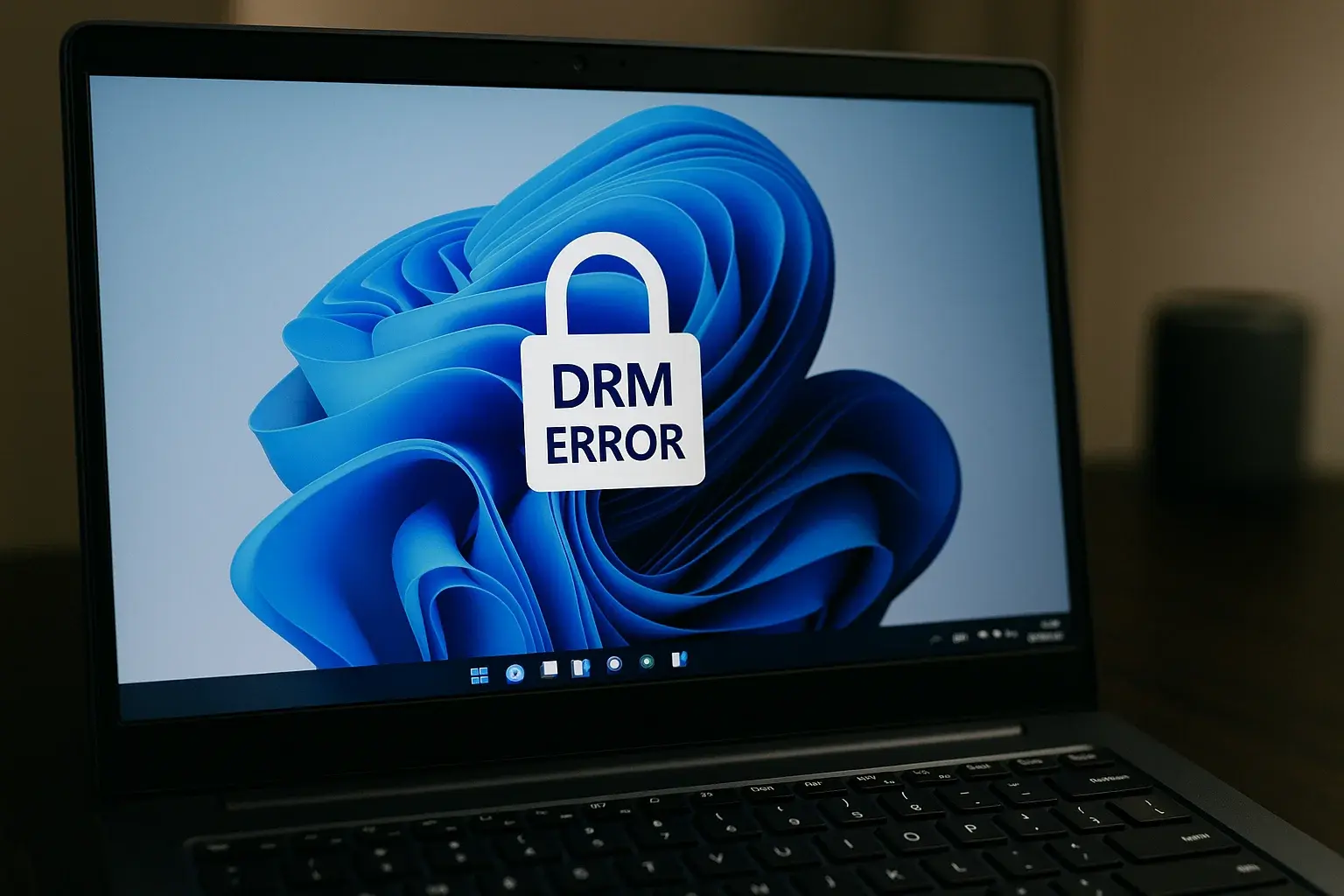If you thought that installing a Windows update always guarantees improvements, you probably know by now it’s not that simple. Each patch may fix important bugs… but can also bring unexpected errors. That’s exactly what happened in September 2025, when Microsoft confirmed that cumulative update KB5065426 for Windows 11 (version 24H2) caused issues with DRM and HDCP in certain applications.
At TecnetOne, we’ll break down what this bug means, who’s really affected, what actions you can take right now, and why this reminds us just how fragile your PC’s multimedia ecosystem can be.
What Happened with KB5065426?
Microsoft posted an official notice on the Release Health portal: some digital TV and DVD/Blu-ray playback apps are experiencing errors when handling protected content. Reported symptoms include:
- Freezing or stuttering during playback
- Unexpected black screens
- Copyright-related error messages
The issue was traced to how the Enhanced Video Renderer, in combination with HDCP and DRM, handles video content. These technologies are designed to prevent unauthorized copying of digital media.
Interestingly, this bug does not affect streaming platforms like Netflix or Disney+—only specific apps for digital TV and physical disc playback.
Root of the Problem
It all seems to have started with update KB5064081, released on August 29, 2025. The issue persisted in the September cumulative update KB5065426.
So, if you’ve installed either of these updates, your system may be affected.
Who’s Affected (and Who’s Not)?
Affected Users:
Anyone using digital TV apps or DVD/Blu-ray players in Windows 11, especially those relying on the Enhanced Video Renderer with DRM/HDCP.
Not Affected:
Users who only stream content (Netflix, HBO Max, Prime Video, etc.), since these services use a different content protection system.
If your PC use is streaming-only, you likely won’t notice anything. But if you still enjoy watching discs or digital TV on your computer, this issue might hit you hard.
Also of ineterst: How does Microsoft Copilot work in Azure?
Other Bugs Tied to the September Update
While DRM is the main concern, update KB5065426 also introduced other issues:
- PowerShell Direct (PSDirect): Failures in virtualized environments after applying hotpatch. Microsoft fixed it with KB5066360.
- SMBv1: Some network share connections stopped working. As a temporary workaround, Microsoft recommends enabling TCP 445 to force SMB over TCP.
- Gaming: Some EA titles using Javelin anti-cheat and older DirectX 9 titles showed render issues, though these are not widespread.
What You Can Do Now
First, don’t rush to uninstall security patches. While bugs are annoying, these updates also fix critical vulnerabilities you don’t want to leave exposed.
Practical steps:
- Monitor Windows Update: Microsoft has acknowledged the bug and is working on a fix.
- Apply specific mitigations:
- If you rely on SMBv1, enable TCP 445 temporarily—but ideally migrate to SMBv2 or SMBv3.
- For PSDirect environments, ensure both host and VMs are updated with KB5066360.
- Be patient with multimedia: If you use digital TV or disc apps, the only real fix is to wait for the next patch.
Why DRM Is So Fragile on Windows
DRM (Digital Rights Management) and HDCP (High-bandwidth Digital Content Protection) are meant to protect content creators. The problem? These security layers are extremely sensitive—even minor updates to Windows video rendering components can completely break playback.
This case is a strong reminder of how fragile the multimedia ecosystem on Windows can be. A system update can unintentionally disrupt access to legally purchased content due to overly strict or poorly integrated protections.
Learn more: Microsoft Fixes Streaming Issues in Windows After Faulty Update
What This Means for You
Even though Microsoft limited the issue to physical discs and digital TV apps, it raises broader points:
- If you still rely on DVDs or Blu-rays, your experience may suffer until an official fix is released.
- Streaming looks increasingly resilient, with fewer compatibility issues than traditional DRM.
- The multimedia ecosystem on PC remains complex and brittle—modern hardware alone isn’t enough if DRM layers conflict with system updates.
TecnetOne’s View
At TecnetOne, we believe this incident reinforces the need for safe update strategies, especially in business environments. Blindly installing patches can have unexpected effects in critical systems.
We always recommend:
- Testing updates in controlled environments before full deployment.
- Monitoring Microsoft’s Release Health page for confirmed bugs.
- Having a contingency plan to minimize the impact of disruptive patches like this.
Conclusion
The DRM bug introduced in Windows 11 by update KB5065426 is a clear reminder that even security patches can break key system features. If you use digital TV or disc playback apps, you may notice issues. Streaming users? You’re probably in the clear.
Microsoft is working on a fix. In the meantime, stay informed, apply mitigations where possible, and never uninstall updates without carefully assessing the risks.
At TecnetOne, we’ll continue monitoring these developments to help you stay protected and understand how changes like this impact your digital ecosystem.

